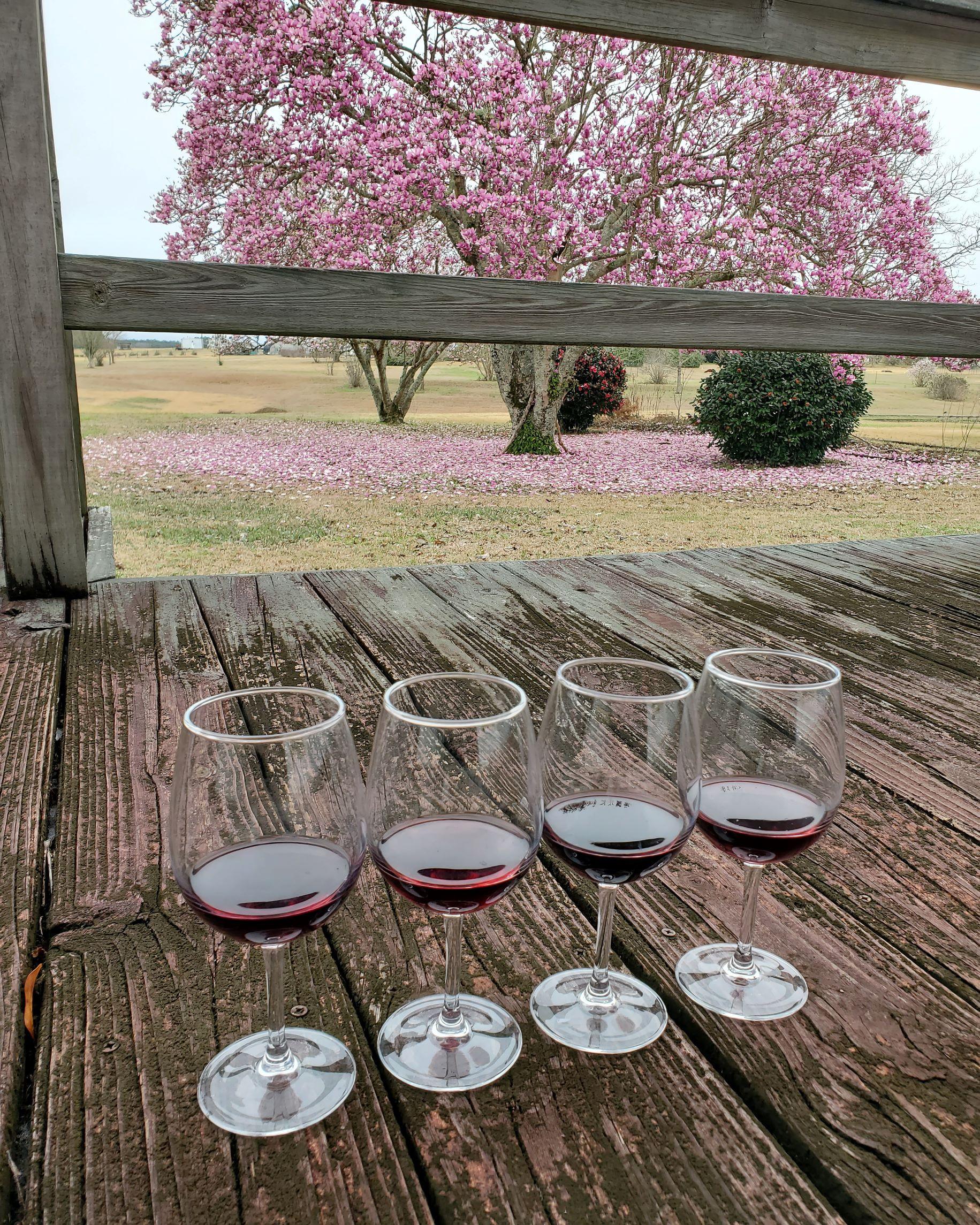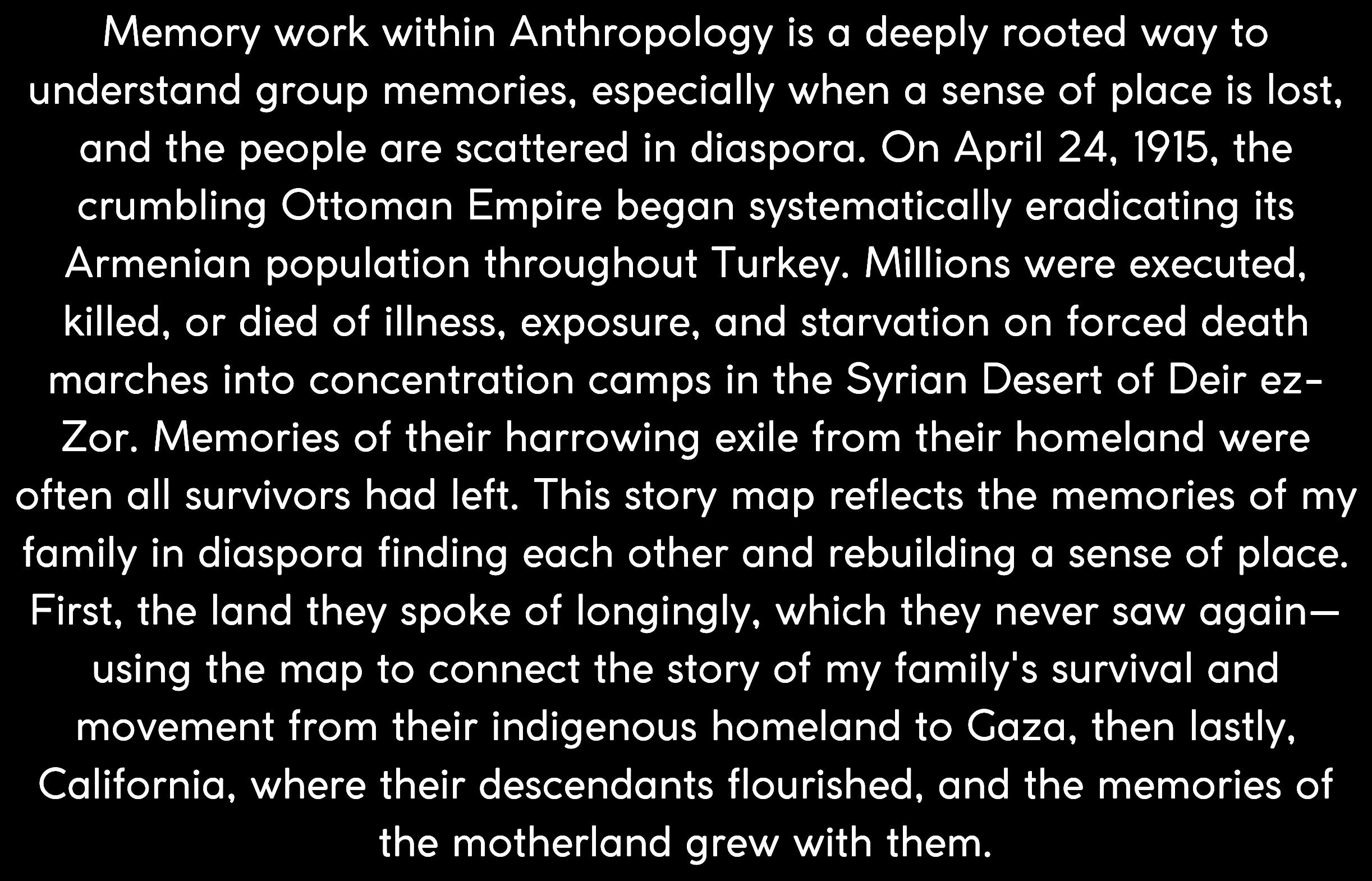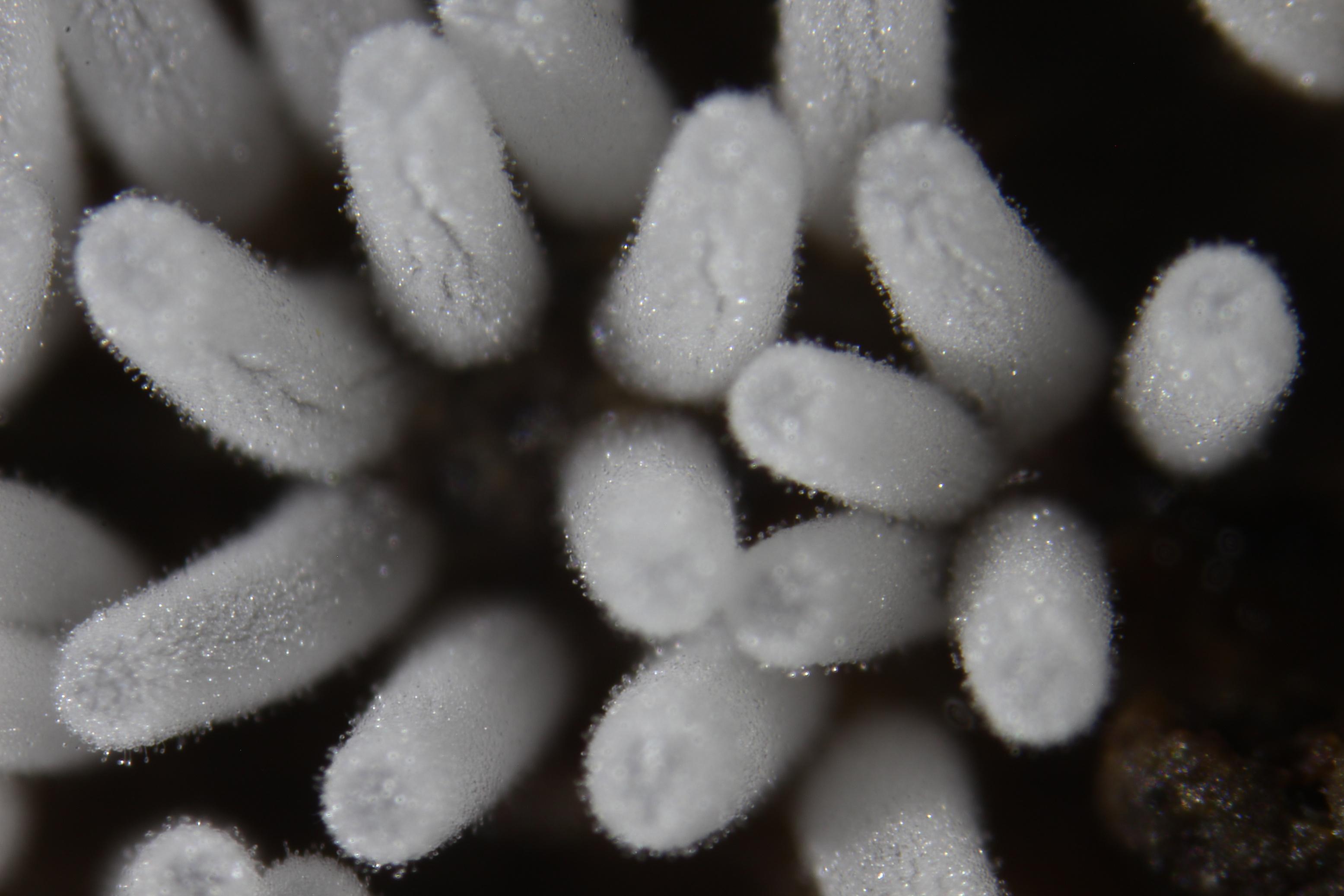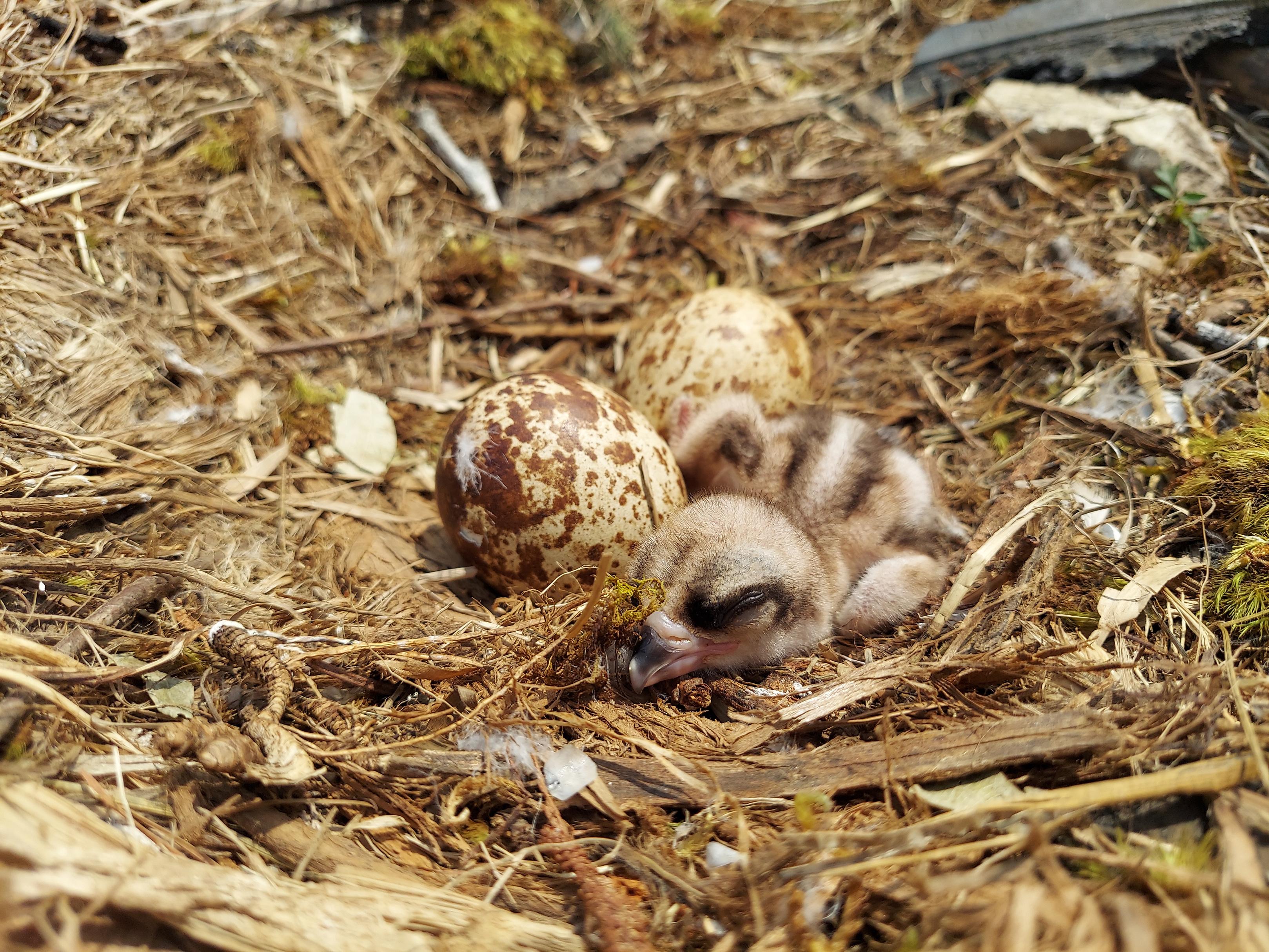IN LIGHT OF THE STORM

Mythesisworkiscenteredoncreatinganupdatedsevereweather rankingmethodology.Thegoalistothenstudyandanalyzethe similaritiesamongvariousoutbreakenvironmentstopossibly allowformoreaccurateoutbreakforecasts.ThroughMississippi State’sseverestormmethodsfieldcourse,Iwasabletodirectly obtainmeasurementsonpre-stormenvironmentsacrossthe country.TheimagethatIamsubmittingwastakendirectlyaftera majorhailstorm,producingbaseball-sizedhail.Thiscloud formationiscommoninthesetypesofstormsduetothe turbulencethattheycreate.Itcreatesabeautifulandalmost otherworldlyview.
Name: Adonte Knight
Level: Master's
Department: Geoscience
Workingforestsproducefood,fiber,andecosystemserviceswhich supportbenefitssuchashabitatforwildlifeandsaferecreation.
However,forestsrelyonhealthysoilstoprovidetheseresources, andinthesoutheasternUnitedStates,surfacemininghas degradedthesoilstothepointwherevegetationstrugglesto grow.Thisincentivizestherestorationofsoilhealthondegraded landtosupportourforests.Totestdifferentrestoration techniques,soilcoresarecollectedandprovideaglimpseinto whattheearthbelowlookslike.Althoughmanythinkofsoilas justabrownhue,itcanencompasscolorsrangingfromblack (organicmatter)tored(iron)andevenpink(heavymetals)!These vibrantsoilcoresarevaluablenotonlytotellusaboutthe chemicalcompositionandsoilhealth,butalsovisuallydisplaysthe progressofourrestorationwork.

Name: Casey Iwamoto
Level: PhD
Department: Forestry

Thisimage,takenatthePalaceofKnossosinCrete,connectsthe pasttothepresentbyprovidingaglimpseofthepalaceruinsand areconstructionofitsdestruction.Myresearchlooksatthe immensesocialcollapsethattookplaceattheendoftheLate BronzeAgeinwhichpalacesitessuchasthisonewereransacked andburnedtotheground.Itisthroughlookingattheruinsand theindividualswhomayhaveinhabitedthemthatwecangaina betterunderstandingofhowthiscollapsemayhavehappened, whomayhavebeenaffected,andhowlifewasabletocontinue afterthetumultuousendofanera.Thoughthisoccurred3000 yearsinthepast,theruinsofsuchimmense,powerfulsitesarestill abletoprovideuswithusefulinformationaboutMycenaean Greeceatthepalatialeconomy’sinception,height,andeventual collapse.

Name: Daniel Dillon
Level: Master's
Department: Anthropology and Middle Eastern Cultures

Much of the focus in the field of forensic anthropology has been on developing better methods for decedent identification and determining more accurate time since death estimations within medicolegal contexts. Until recently however, there has been little emphasis placed on how socioeconomic considerations can be incorporated to better identify the role that inequality, through instances of social vulnerability and structural violence, plays in recovery times for individuals from different demographics. Further focuses on sociocultural and socioeconomic impacts in the field of forensic anthropology can help to connect the effects of systematic violence and vulnerability and emphasize how perceived stigmas for certain demographic groups can cause discrepancies in how politics, law enforcement, and medicolegal personnel assist and conduct casework through racial and socioeconomic factors. This image symbolizes a fraction of the multitude of individuals who identify within different demographic groups in the US, where individuals are recovered on disproportionate timelines.

Name: Elise Adams
Level: Master's
Department: Anthropology and Middle Eastern Cultures

TheConservationReserveProgram(CRP)isafederallysponsored programadministeredbytheFarmServiceAgencywhichpays farmersannuallyiftheyagreetoremovesensitivelandfrom agriculturalproductionforapproximately10or15yearsand insteadplantspeciesthatwillimproveenvironmentalhealthand quality.TheprimaryobjectivesoftheCRPprogramareto improvewaterquality,reducesoilerosion,andprovidewildlife habitat.Inadditiontotheseprimarygoals,CRPalsopromotes otherecosystemservicessuchasmicroclimate,habitat fordifferentanimalspeciesincludingsmallorganismsandwildlife, andsoforth.ThispicturewascapturedinaCRPlandin MississippiState,showcasingasuitablehabitatforfungi,mosses, fernsandgraminoids.Itisalsoahighlightofhowasmallparcel ofCRPlandcansupportaplacetoliveformicro-organisms, whichservesasatinyforestnestedinalargerforest.
Name: Htet Lin Naing
Level: Master's
Department: Forestry

‘MidSouth’ is a relatively low maintenance interspecific hybrid bunch grape currently grown in South Mississippi. While this cultivar is typically high in titratable acidity and produces a varietal red wine that is tart in flavor when fermented with Saccharomyces cerevisiae, sequential or spontaneous fermentations using non-Saccharomyces from the skins of the grapes have the potential to improve the taste perception of this wine since some non-Saccharomyces can metabolize acid in wine. Wine was fermented with the addition of commercial S. cerevisiae at 3 days after harvest, 6 days after harvest, 9 days after harvest, or with no addition of S. cerevisiae. The sooner S. cerevisiae was added, the quicker the wine fermented; however, when the wine was made with no addition of S. cerevisiae it had a fruitier flavor and smoother mouthfeel. Thus, the question becomes “what species is this non-Saccharomyces, and will it consistently be there each year?”

Name: Haley N. Williams
Level: PhD
Department: Plant and Soil Sciences
Gopher frogs are a species in decline in the southeastern United States. These frogs spend most of their lives underground in burrows in longleaf pine savannahs, emerging each year to migrate to breeding ponds in late winter. As part of a multi-state effort to learn more about the movements and upland habitat uses of this rare species, I place radiotransmitter belts on frogs leaving breeding ponds in Alabama. More than just a froggy fashion accessory, these belts allow me to track where the frogs are going and what natural features the frogs are using in the landscape. By monitoring the movements and microhabitat uses of gopher frogs, we can work towards habitat management strategies, restoration efforts, and reintroduction of frogs within their historic range. This particular frog was resting under pine straw during its 1.5km journey to its cozy stump hole home in the uplands.

Name: Krista Ruppert
Level: PhD
Department: Wildlife, Fisheries, and Aquaculture

Depicted in this image is a single live sperm surrounded by a sea of its fallen comrades. This photo was taken using a camera mounted to a fluorescent microscope and highlights the utility of fluorescence microscopy for measuring a critical metric when evaluating sperm quality: cell viability. Live cells fluoresce bright green and dead cells fluorescence bright red; when a cell dies, membrane integrity is lost and allows for the red fluorescent stain to enter the pores of the dead cell. At the Conservation Physiology Lab at MS State, we apply several assisted reproductive technologies (ART) to support conservation breeding programs for threatened amphibian species at zoos and aquariums all over the United States. Ultimately, ART is used to increase population numbers and to introduce new genetic diversity into endangered animal populations both in the wild and for animal species kept under human care.

Name: Li-Dunn Chen
Level: PhD
Department: Biochemistry, Molecular Biology, Entomology, and Plant Pathology

Name: Larra Myron Diboyan
Level: Master's
Department: Anthropology and Middle Eastern Cultures



Name: Lacy Dolan
Level: PhD
Department: Wildlife, Fisheries, and Aquaculture



Working forests provide unique opportunities for biodiversity research, conservation, and management. At the landscape scale, working forests consist of a patchwork of different stand ages and characteristics that support a variety of flora and fauna communities.
This photo showcases an example, where the blooms of a shadeintolerant mountainmint plant provides nectar for a tiger swallowtail butterfly. Mountainmint cannot grow well under the shade of a dense tree canopy and relies on the removal of trees to allow direct sunlight to reach the ground. Without these conditions, many plants cannot grow and provide food and resources for wildlife such as pollinators. Research is currently showing that the time of young tree growth is also an opportunity for blossoming life.

Name: Madalyn Stoecker Level: Master's
Department: Wildlife, Fisheries, and Aquaculture
These columns of the common slime mold Ceratiomyxa fruticulosa bear external spores bound for propagation by insects and air currents. They occur exclusively on decaying logs. During the other parts of their life cycle they exist as single-celled microscopic amoebae and as a net of slime within the decaying wood. When the environment is suitably moist, they emerge and form these pillar structures, called fruiting bodies. The fruiting bodies are visible to the naked eye, between 2-3 millimeters tall, but here are magnified approximately 40 times larger. Species identification is traditionally determined by the shapes of these fruiting bodies, in this case appearing as dew-laden fingers; However, my work sequencing hundreds of genes reveals that morphology alone is not sufficient. Many cryptic species hide behind the form you see here.

Name: Nicholas Fry

Level: PhD
Department: Biological Sciences
An Osprey (Pandion haliaetus) chick has hatched on a busy reservoir in northern Alabama. Little does she know, while she calls to a team of researchers for fish and hides in their shade on a hot summer day, that her life will become part of a large-scale project to better understand the ecology of her species. During my PhD, I have visited 91 Osprey nests in four southeastern states. Each nest is visited twice each year, to gather information on productivity, to collect DNA samples, and to place unique identification bands and GPS trackers on the birds. We banded 236 Ospreys and deployed 27 GPS transmitters, which allow us to follow these birds on their longdistance migrations to Brazil and Peru. It’s amazing to think this little chick will travel over 6,000 km each year on a round trip to South America and return to sweet home Alabama.

Name: Natasha Murphy

Level: PhD
Department: Wildlife, Fisheries, and Aquaculture
As a researcher working with mutant construction of Aeromonas hydrophila gene, the process of overlap PCR gel cutting is an essential step in my work. This process involves amplifying two separate DNA fragments with overlapping ends using PCR, then cutting the bands from an agarose gel and splicing them together to create a larger fragment. This technique allows me to precisely manipulate the genetic material of the bacterium to study its function and behavior. By creating specific mutations in the gene of interest, I can explore the effects of these changes on the bacterial phenotype, including its ability to cause disease or survive in different environments. Overall, the overlap PCR gel cutting process is a critical tool in my research toolkit, enabling me to make precise and targeted genetic modifications to better understand the virulence of Aeromonas hydrophila.

Name: Saida Zinnurine
Level: Master's
Department: Comparative Biomedical Sciences
Molds are microscopic fungi that flourish on living tissues. They thrive in warm, moist environments and can grow on a variety of different foods, including bread, cheese, fruits, and vegetables. While some types of mold are harmless, others may produce mycotoxins that could cause foodborne diseases. In addition to the health risk, mold can result in food spoilage and unpalatability. This is a particular concern for the food industry, where spoiled or contaminated food may lead to outbreaks and product recalls. Researchers at the Department of Food Science work on isolating and characterizing mold in foods. They perform microbiological identification and classification of molds, which play an important role in monitoring food safety as well as food spoilage to prevent future contamination. By identifying the specific type of mold present in a food product, the contamination source is determined, and further steps can be considered to prevent, manage, and control the risk.

Name: Zonia Elizabeth Caro Carvajal Level: Master's Department: Food Science, Nutrition, and Health Promotion






























